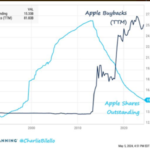Investing in dividend stocks is a popular strategy among many investors. Dividend stocks offer investors a decent dividend yield in addition to any potential gains from price appreciation. So investors tend to gain twice since not only they get paid dividends quarterly or yearly or twice yearly but also the price gains. Since dividends are paid straight out of profits and they are cash in investors’ pocket, dividend investing is a straight forward approach to investing in equities. Moreover income stocks provide a cushion during good times and bad times since the dividends keep coming. Despite all these advantages dividend investing, just like any other strategy, has many risks. Recently I came across an article at Money Observer by Robert Clough is an investment manager at Thesis Asset Management who discussed about five such risks.
1.Tax implications
Taxes are important factor to consider with dividend investing. For example, dividend yields in the US are low by global standards since dividends are taxed at a higher tax rate than capital gains. Hence this artificially forces companies to reinvest retained earnings for growth and investors are content with lower dividends since it reduces their tax hit.
Similarly US tax rates for dividends from REITs, bond ETFs, and other asset types are different. Hence investors need to be aware of them. Dividends paid out bond ETFs for instance are “Ordinary Dividends” which have higher tax rates than “Qualified Dividends” paid out by stocks that are held over 1 year.
Investing in foreign dividend stocks involves dividend withholding taxes by foreign states. These rates can be 0% to as high as over 35%. In many cases, US investors cannot recover these taxes and the withholding tax rates effectively reduce the net yield received by an investor.
2.Dividends can be erratic
Dividend payments are not guaranteed and can be cancelled or suspended or reduced at any time by a company. So investors should remember this fact and accordingly choose companies. Generally well-established companies with strong balance sheets tend to pay consistent dividends.
3.Correlation of dividends
Many companies in the same sector more or less have similar dividend yields. For instance, banks tend to have higher yields in the 2%+ range in the US. However simply investing in a bunch of banks to capture these juicy dividends is not a great idea. This is because during crises such as the Global Financial Crisis of 2008-09 banks suspended or reduced their dividends.
4.Mature companies
Mature companies may have higher dividend yields but they have lower growth for the obvious reason that they are mature. Unlike a young startup these firms may not have exponential growth. So investors loose out on capital appreciation though they earn high yields.
5.Erosion of capital
As discussed before, companies can reduce or cancel dividends. Reducing a dividend is much better than outright suspending of dividends. When a firm suspends dividend payments many institutional investors may be forced to sell the stock since the stock turns into a non-dividend paying stock. They sell out the stock as their mandates may prohibit owing any stock that does not pay a dividend. Due to this selling prices may decline drastically in the market. A retail that sells during this time for whatever reason will sell at huge loss.
Source: Five risks to check: investing for dividends, Money Observer



